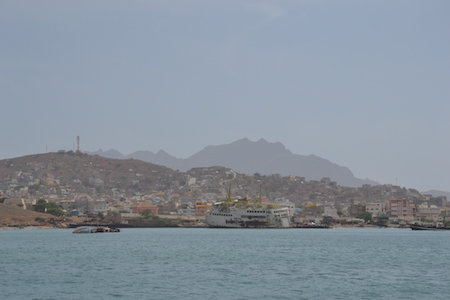
(show on map)
12:15UTC+2

13.08.201911:45UTC+2
Cruising Cape Verdes' Windward Islands
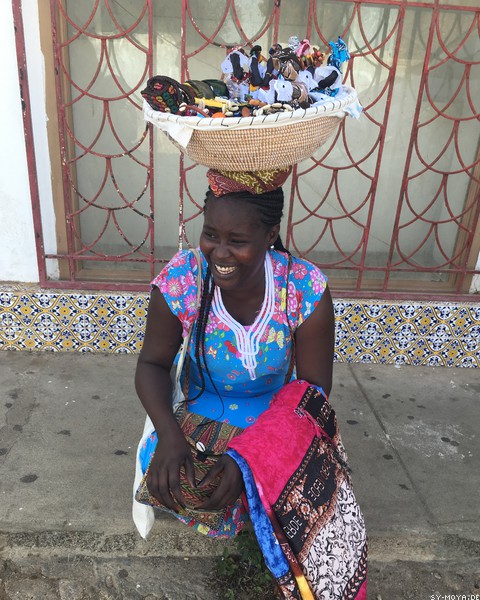
Summary
On our way crossing the Atlantic Ocean heading towards the Caribbean we visited Cape Verde. Instead of doing only a quick stop-over in Mindelo as most cruising yachts do, we decided to stay a little longer to explore the beautiful heterogenous islands, get in touch with locals and meet the African influenced cultural heritage. We are a family of 4 with 2 little boys aged 2 and 4, thus visiting nature and allow sufficient time for adjusting and relaxing before the big jump towards America was a factor too.
We wanted to spend a maximum time of one month, therefore decided to visit only the Windward islands to reduce traveling time on board of our yacht Moya. We visited the flat island of Sal with it's beautiful beaches and large touristic resorts, the mountainous islands of Sao Nicolau and Santo Antao with their amazing landscapes, stunning views and authentic villages and finally the island of Sao Vincente dominated by the vibrant and thriving city Mindelo. Here we enjoyed the urban vibe, access to producing markets and stores for stocking up prior to leave for the Atlantic Ocean.
Yachting facilities at Cape Verde Islands are limited, thus exploring the islands from sea meant anchoring at all places except for Mindelo, where a few years ago a European standard marina was installed. Sailing conditions have been good with a constant northeasterly breeze and little swell. In between the islands we experienced areas of accelerated wind, which was most pronounced between Santo Antao and Sao Vincente, where winds increased about 15 knots in the channel.
We very much enjoyed our visit at Cape Verde, especially at the more remote islands Santo Antao and Sao Nicolau as people and nature were just wonderful. We always felt safe, have been welcomed warmly by locals and officials and had no issues whatsoever.
Safety & Formalities
Immigration, Customs & Port Control
Prior to visiting Cape Verde we have been a little confused whether or not we would need a visa for visiting the islands by boat as we received contradictory information from noonsite and our local embassy. To be on the safe side we issued visas prior to our visit, which was absolutely not necessary. In our experience for Germans a visa is only required for crew joining or leaving a yacht on the islands or in case crew leaves the yacht overnight. Respective visa can be issued on the island and is less costly compared to issuing the visa at home. From the three ports of entry (Palmeira on Sal, Mindelo on Sao Vincente and Praia on Santiago) we choose Palmeira to clear in as we wanted the children to have some beach time after 6 days at sea.
After arrival we hoisted the courtesy flag as well as the Q flag and the captain visited directly immigration as well as the maritime police, both located within the same blue building which is only a few houses away from the anchorage. Prior to departure from Palmeira as well as from the other islands (please refer to the respective section along route) we were required to pay anchoring fees (Status 2017: 7 Euros) and receive passage clearance to the next island from maritime police. In case we wanted to visit another anchorage on the same island, we were required to receive passage clearance for the respective day of departure from the island in advance. Maritime police in all ports except Santo Antao retained ship documents (copies were ok). Immigration only needed to be issued again at departure from Cape Verde at a port of entry. We heard that the final clearance can also be done in advance in case of a subsequent visit of another island without a port of entry, but we didn't use this procedure, thus cannot comment how it is working. Generally, clearance procedures were straight forward and efficient at all islands we visited and took less than 30 minutes in all locations. Officials were friendly and supportive and all of them were speaking at least a bit English.
Safety
Despite Cape Verde only recently gained the status of a developing country and no longer belonges to the 50 least developed countries, safety was good on the islands. Our safety procedures were straight forward in shutting all hatches and locking Moya when not on board. When possible we locked our tender by a niro cable at night or as we spent time ashore. Many locals are (sometimes a little too) eager to watch the dingi for a small fee and help to beach it, which always worked nicely for us. As our children are still small we rarely left Moya after dusk but in cases we did we did not have any issues. We have been on several whole day trips during the day and in no circumstances felt unsafe. Generally people are welcoming and supportive, the only time we had a not so nice experience was at the beach at Santa Maria (Sal), where a vendor aggressively pushed us and finally shouted at us as we declined to purchase his offering.
Cruising generals
Winds & Swell
During our stay winds constantly blew from the northeast, mostly with 15 to 20 knots during the day. At nights winds often decreased or completely died, which needed to be considered when choosing a suitable anchor spot, as Moya sometimes swinged 180 degrees. At the lee side (southwestern side) of the islands winds generally have been weaker and southwest of Sao Nicolao dropped to below 5 knots at night, thus sailing was no longer possible. In between the islands we experienced increased winds, which was most pronounced in the channel between the islands of Sao Vincente and Santo Antao, where winds increased by 15 knots. Swells have been low to moderate from northeast with less than 2 meters amplitude during the whole period of our visit.
Provisioning
Possibilities for yacht provisioning on Cape Verdes windward islands are very limited except for Mindelo. On all islands there are mini markets, most of them are owned by Chinese. For us selection of non perishable goods was acceptable, but not comparable to European standards. In respective markets selection of fruits and vegetables usually was rather poor and sometimes shops just sold one or two items most often potatoes and garlic. Some of the Chinese shops offered imported fresh products, which needed to be stored refrigerated or had to be consumed within 1 or 2 days after purchase.
At Sal we found it worthwhile to make the trip to the town of Espargos, which is accessible by minibuses at low rates (50 Cents one way per Person). Here local woman offered a broader selection of fruits and vegetables as compared to Palmeira. Fresh products are produced on Sao Nicolau and Santo Antao, thus selection is better and prices are lower on these islands as compared to Sal. In Mindelo (Sao Vincente) provisioning is much easier as compared to the remaining windward islands, as several supermarkets (also selling imported goods), bakeries and butchers are available and most farmers from Santo Antao carry their goods to the fresh produce markets of Mindelo. We stocked up fresh products here prior to leaving towards the Caribbean. For non perishable goods we were lucky, that we planned ahead and increased our stocks sufficiently already at the Canary Islands, where goods are cheaper and selection is broader.
Fuel, Water & Gas
We did not require fuel at Cape Verde, but saw that it is easily accessible at the Marina in Mindelo.
Shell sells at the Cape Verde islands gas in the same containers as Camping Gaz and can be obtained on each island. As we use propane/butane gas we refilled our bottles in Palmeira directly at the big energy depot next to the anchorage. In this depot they only have adaptors for gas trucks, thus a suitable adaptor has to be brought along. We asked for the adaptor in the Bar Arminda and have been directed to Carlosch who gladly borrowed it. Alternatively, Jay who offers water taxi service, water and laundry service is supposed to have an adaptor, too. Butane refill in the depot was straight forward and cost us approximately 15 USD for 12 Kilo Gas.
Water is available at the pontoon in the Mindelo Marina (Sao Vincente), it has to be purchased by the liter (100 liter for 2 USD). We cannot judge water quality but thought it is ok. In Palmeira (Sal) Jay offers to deliver water in canisters, but we did not use his service. On Sao Nicolau and Santo Antao we did not require water, thus cannot comment on availability and quality.
Money & Internet
Palmeira (Sal) has no ATM in town, thus we obtained Escudos in Espargos (10 minutes ride by minibus). Almost everybody also accepts Euros, but rates are a little better when paying in Escudos. In Santa Maria (Sal), Mindelo (Sao Vincente) and Tarrafal (Sao Nicolau) several ATMs are available. In Porto Novo (Santo Antao) we did not look for an ATM, thus cannot comment.
In Palmeira we did not find a restaurant or bar with internet access, in all other towns and villages internet was never an issue. Moreover, we bought a local SIM card and a data package with it, which allowed us internet access at most places on the islands (price: 1 USD for the SIM card and 5 USD for 1 GB)
Along Route
Sal (Palmeira & Santa Maria)
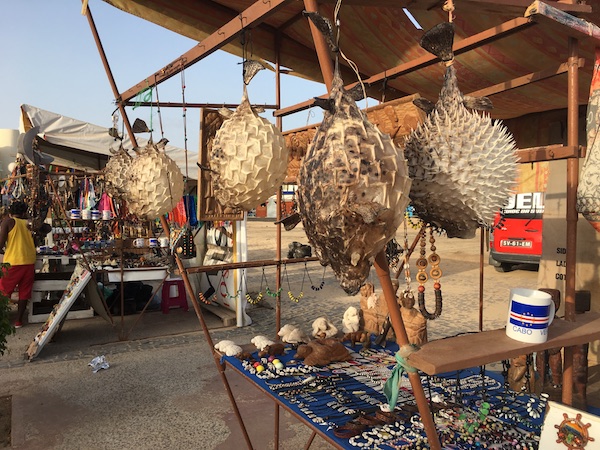 The island of Sal is flat with only little vegetation. Palmeira is a small authentic village which is the main docking site for the island. Besides the anchorage where local fisher and tourist boats as well as cruising yachts lay at mooring or anchor, there is also a dock for container ships and tankers. An energy depot is located next to the village. Anchoring yachts need to keep clear for approaching or departing container ships, respective area is marked by buoys. In the outer area of the bay we anchored 6 meters over sand, but as Moyas position was too close to the buoyed channel a boat boy guided us to the inner part of the harbour, which is mainly occupied by locals. There we anchored in 3 meters over mud, holding was very good. At anchor there was a constant breeze from NE but no swell. At the northern end of the bay there is a beach (not suitable for bathing, loads of rubbish) and a dock for the fisherman, both were good for leaving the dingy.
The island of Sal is flat with only little vegetation. Palmeira is a small authentic village which is the main docking site for the island. Besides the anchorage where local fisher and tourist boats as well as cruising yachts lay at mooring or anchor, there is also a dock for container ships and tankers. An energy depot is located next to the village. Anchoring yachts need to keep clear for approaching or departing container ships, respective area is marked by buoys. In the outer area of the bay we anchored 6 meters over sand, but as Moyas position was too close to the buoyed channel a boat boy guided us to the inner part of the harbour, which is mainly occupied by locals. There we anchored in 3 meters over mud, holding was very good. At anchor there was a constant breeze from NE but no swell. At the northern end of the bay there is a beach (not suitable for bathing, loads of rubbish) and a dock for the fisherman, both were good for leaving the dingy.
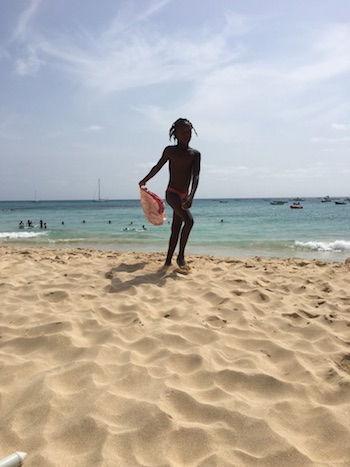 Navigation is supposed to be straight forward as the approach to the bay is buoyed, however as we approached Palmeira just before dawn we have been a little confused as only approximately half of the lights were working. In the approach there are also four buoys forming a tanker berth, the outer two are supposed to be lit, but only one was working at our visit. We avoided this area all together.
Navigation is supposed to be straight forward as the approach to the bay is buoyed, however as we approached Palmeira just before dawn we have been a little confused as only approximately half of the lights were working. In the approach there are also four buoys forming a tanker berth, the outer two are supposed to be lit, but only one was working at our visit. We avoided this area all together.
Formalities have been conducted smoothly (refer to the formality section above) and passage clearance to Sao Nicolau was gained in advance at the day we have been leaving for Santa Maria, the main touristic center on the southern tip of the island. Palmeira is a small village with a few mini markets, bars and restaurants, but without an ATM or internet access point.
In Santa Maria we anchored southeast of the jetty in 7 meters over sand. As Santa Maria doesn't lay within a bay, the anchorage is rather poorly protected especially from swell. We only spent one rolly night in front of the beautiful beach with bright sand and turquoise water. There is no dingy dock, thus we beached our dingy, which was a wet experience.
Sao Nicolau (Tarrafal)
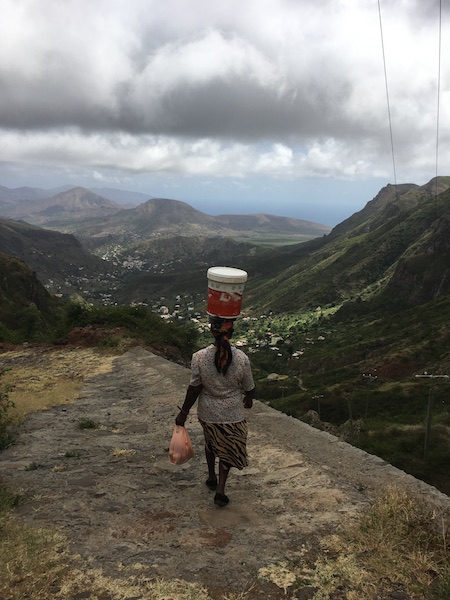 After a quick and smooth over night passage (85 NM from Santa Maria) we approached Tarrafal on the southwestern side of the island mid morning. We held some distance from the shore to avoid the shallow just before the harbour. As we arrived approximately 15 boats have already been at anchor, but finding a suitable spot to throw our anchor was no issue. We anchored outside of the breakwater in 8 meters over sand and left sufficient space as winds died during the night or lightly blew from ashore. Anchor holding was good. The anchorage was well protected from northeasterly winds and swell. Upon arrival, we beached our dingy and left it for a small fee with one of the kids offering to watch the tender. We then visited the policia maritime, which is located just beside the church (same building as policia communal), for issuing formalities. Officials were supportive, retained boat papers until departure, where they issued passage clearance to the next island and collected anchoring fees (7 Euros, irrespective of boat size and duration of stay).
After a quick and smooth over night passage (85 NM from Santa Maria) we approached Tarrafal on the southwestern side of the island mid morning. We held some distance from the shore to avoid the shallow just before the harbour. As we arrived approximately 15 boats have already been at anchor, but finding a suitable spot to throw our anchor was no issue. We anchored outside of the breakwater in 8 meters over sand and left sufficient space as winds died during the night or lightly blew from ashore. Anchor holding was good. The anchorage was well protected from northeasterly winds and swell. Upon arrival, we beached our dingy and left it for a small fee with one of the kids offering to watch the tender. We then visited the policia maritime, which is located just beside the church (same building as policia communal), for issuing formalities. Officials were supportive, retained boat papers until departure, where they issued passage clearance to the next island and collected anchoring fees (7 Euros, irrespective of boat size and duration of stay).
Tarrafal is a small unspoilt fishing village with just a few shops with limited selection of mainly non perishable food around. The beach at anchorage is rather dirty with many small fishing vessels at mooring or on the beach, but on the other side of the breakwater (5 min walk through town) the beach is much nicer for swimming, though there is significant surf. One of the first buildings on the southeastern side of the anchorage is a nice little restaurant, which we liked for the delicious inexpensive fish. The building has paintings of sharks and other sea animals.
From Tarrafal we took a minibus to go to Ribeira Brava, the capital of the island. We drove through lush green mountains with stunning views and departed the bus early at Cachaco to walk the last kilometers (2 to 3 hrs) downhill to the city. After exploring Ribeira Brava we purchased fresh produce grown on the island in the local market hall for reasonable prices.
Santo Antao (Porto Novo)
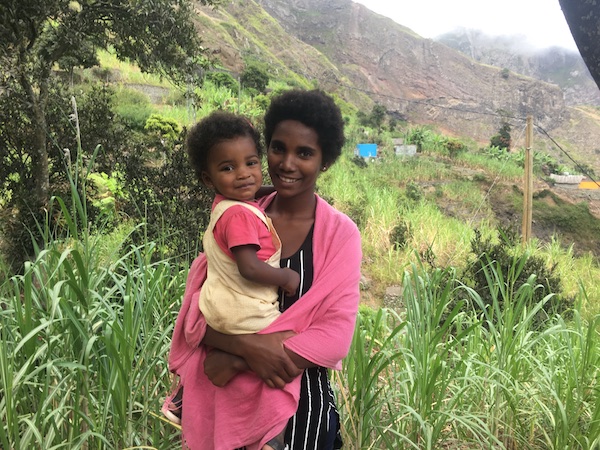 We arrived in Porto Novo at night, after a short trip from Sao Nicolau. We expected increasing winds in the Chanel de Sao Vincente, which we did not encounter during the night but on the following days at anchor. As anchoring boats and the breakwater were not lit (breakwater has a navigation light which was not working), we had some hazards in finding a suitable anchoring spot and finally decided to anchor just behind the breakwater and make room for approaching ferries (connecting Santo Antao and Sao Vincente) next morning, when we anchored in 7 meters on the edge of the beach. The small anchorage can only hold a few boats, especially since the ferries need space to turn behind the breakwater and some local boats are tied up on moorings. The breakwater protects the water just behind from swells, but as we could not anchor in close proximity Moya rolled quite a bit. Protection against wind which gusted to 35 knots was rather poor.
We arrived in Porto Novo at night, after a short trip from Sao Nicolau. We expected increasing winds in the Chanel de Sao Vincente, which we did not encounter during the night but on the following days at anchor. As anchoring boats and the breakwater were not lit (breakwater has a navigation light which was not working), we had some hazards in finding a suitable anchoring spot and finally decided to anchor just behind the breakwater and make room for approaching ferries (connecting Santo Antao and Sao Vincente) next morning, when we anchored in 7 meters on the edge of the beach. The small anchorage can only hold a few boats, especially since the ferries need space to turn behind the breakwater and some local boats are tied up on moorings. The breakwater protects the water just behind from swells, but as we could not anchor in close proximity Moya rolled quite a bit. Protection against wind which gusted to 35 knots was rather poor.
As we could not use the breakwater or docking station for the ferry to disembark our tender, we beached our dingy and left it with one of the boat boys. To conduct our formalities we visited the port office, just beside the breakwater. Officials did not retain the ship papers (in contrast to all other ports) and issued the passage clearance to the next island at once upon arrival. Anchoring fees of 15 USD were collected. From Porto Novo we hired a taxi to visit the volcano cove up in the mountains. From the cove we had beautiful views on the southeastern side of Santo Antao and on Sao Vincente on the other side of the Chanel. We climbed down into the cove, which is used for growing fruits and vegetables, crossed it and descended down the lush green valley of Paul to the other side of the island. We enjoyed the partially steep downhill trail a lot with its agricultural variety and amazing views. Afterwards we had planned to ride back with one of the collectivos (minibuses), but they stopped operating after the last ferry runs from Porto Novo to Sao Vincente (approximately 3 pm). A private car was kind enough to give us a ride, alternatively we would have caught a taxi (much more expensive as compared to the collectivos).
As sea and wind conditions got worse during our stay, we were not longer able to leave Moya, thus we reluctantly departed Santo Antao early. The island definitely offered a lot more to explore.
Sao Vincente (Mindelo)
Before we approached Mindelo Marina, we anchored a few days (during ARC visiting Mindelo) behind the breakwater on the southern side of the city. The anchorage was well protected from the predominated northeasterly trade wind as well as from northerly swells. The water was very calm. We used the dingi dock of the Marina to go ashore (daily fee = 4 USD) and visited policia maritime (located close to the ferry terminal) to conduct formalities upon arrival. As we left cape verde island for the caribbean, we also visited immigration (same building) at the day prior to departure, as the offices are closed on weekends.
After departure of the ARC we relocated to the Marina, where Moya was tied up with her bow on a mooring buoy and with her back on the pier. Winds have not been strong, nevertheless there was a constant surge in the harbour, which pulled at the lines. We had no problems with Moya but heard from other boats which suffered from ripped line buffers or displanted clamps. The Marina offered electricity and fresh water at the pier. Water needed to be purchased by the Liter. Beside the marina office there is a small shop from boat CV, they offer a variety of nautical equipment but also chandlery and sail repair services. Our genoa had a ripped seam, which they repaired in a timely manner, repair work however was not excellent.
Mindelo is a vibrant city with an urban atmosphere. Many wide selection of bars, cafes and restaurants and even clubs is available. There is a beautiful white sandy beach with crystal clear water and beach bars, just behind the breakwater, which our children enjoyed as well as the well equipped playground (the first we saw since the Canary islands). In Mindelo we found many items we could not get on the other Cape Verdean islands and used the well stocked (but selection is still not comparable to european standards) supermarkets and fresh produce market for provisioning for the upcoming atlantic crossing.
